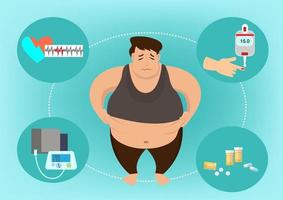As one of the leading causes of death worldwide, heart attack is a condition that demands immediate attention and effective treatments. Fortunately, medical researchers are constantly exploring new ways to combat this life-threatening condition. From cutting-edge medications to innovative surgical techniques, there have been some exciting developments in recent years. In this blog post, we will be discussing seven new treatments for heart attack that offer hope for patients and their families alike. So buckle up and read on!
Acute Coronary Syndrome
Acute coronary syndrome (ACS) is a serious condition that occurs when the blood supply to the heart is blocked. ACS can lead to a heart attack.
There are two types of ACS: unstable angina and non-ST segment elevation myocardial infarction (NSTEMI). Unstable angina is chest pain or discomfort that happens when the heart muscle does not get enough oxygen-rich blood. NSTEMI is a heart attack that happens when there is a partial blockage of one or more of the coronary arteries.
Treatment for ACS often includes medicines, such as aspirin, beta blockers, and nitroglycerin. Some people may also need angioplasty with stenting or coronary artery bypass surgery.
Cardiac Catheterization
A cardiac catheterization is a procedure to diagnose and treat certain heart conditions. It is also used to measure heart function.
This minimally invasive procedure involves inserting a long, thin tube (catheter) into an artery in the leg and threading it through the arteries to the heart. Once the catheter is in place, dye is injected into the arteries to help your doctor visualize them on an X-ray screen.
The procedure can be used to check for blockages in the coronary arteries, assess damage after a heart attack, or determine whether the heart is pumping blood properly. It may also be used to treat certain heart conditions, such as abnormal heart rhythms (arrhythmias), by destroying tissue that is causing the problem or by implanting a device, such as a pacemaker, that will help regulate the heartbeat.
Cardiac catheterization is generally safe and complications are rare. The most common complication is bleeding at the site where the catheter was inserted.
Cardioversion
Cardioversion is a medical procedure that is used to treat an irregular heart rhythm. It is usually done by electrical shock, but can also be done with medication. Cardioversion can be used to treat atrial fibrillation, atrial flutter, and other arrhythmias.
If you have an irregular heartbeat, your heart may not be able to pump enough blood to your body. This can cause you to feel lightheaded, dizzy, or short of breath. Cardioversion can help improve your heart’s pumping action and relieve these symptoms.
Cardioversion is usually done as an outpatient procedure. You will likely be given general anesthesia or sedation before the procedure so that you are asleep during it. Once you are asleep, the doctor will place electrodes on your chest. These electrodes will deliver a small electric shock to your heart. The shock will cause your heart to revert back to its normal rhythm.
After the procedure, you will be monitored in a recovery area for a few hours. You may have some mild side effects from the anesthesia or sedation, such as dizziness or nausea. These side effects should go away quickly. You may also have some discomfort where the electrodes were placed on your chest.
Coronary Artery Bypass Grafting
1. Coronary Artery Bypass Grafting
Coronary artery bypass grafting (CABG) is a surgical procedure to treat coronary heart disease. CABG is usually done when other treatments, such as medications and lifestyle changes, have not helped or are no longer working well.
During CABG, a surgeon creates a bypass around a blocked or narrow section of your coronary artery using a healthy blood vessel from another part of your body. This bypass allows blood to flow around the blockage and to the heart muscle.
CABG surgery is usually done while you are asleep and under general anesthesia. The surgeon makes an incision (cut) in your chest and then connects the bypass graft to the coronary artery above and below the blockage. The bypass graft is usually taken from the saphenous vein in your leg, but it can also be taken from the radial artery in your arm, the internal mammary artery, or another blood vessel.
After the bypass graft is in place, the surgeon closes the incisions with stitches or staples and covers them with sterile bandages. You will then be taken to a recovery area where you will be closely monitored.
Implantable Cardioverter-defibrillators
An implantable cardioverter-defibrillator (ICD) is a small device that is placed under the skin in the chest. It monitors the heart and delivers electrical shocks to restore a normal heartbeat if needed.
ICDs are used to treat life-threatening arrhythmias, or abnormal heart rhythms. Arrhythmias can cause the heart to beat too fast, too slow, or irregularly. This can cause symptoms like shortness of breath, dizziness, and chest pain. In some cases, arrhythmias can lead to cardiac arrest, which is when the heart stops beating.
ICDs are most often used to treat ventricular tachycardia (VT) and ventricular fibrillation (VF). VT occurs when the heart beats too fast. VF occurs when the heart beats chaotically and doesn’t pump blood effectively. ICDs can also be used to treat other types of arrhythmias.
ICDs are usually recommended for people who have had a life-threatening arrhythmia or who are at high risk for one. ICDs can save lives by restoring a normal heartbeat and preventing cardiac arrest.
Percutaneous Coronary Intervention
1. Percutaneous Coronary Intervention (PCI) is a minimally invasive procedure used to treat narrowed or blocked coronary arteries. The goal of PCI is to improve blood flow to the heart muscle by widening the blocked artery.
PCI is usually performed using a balloon catheter. A guide wire is inserted through the femoral artery in the groin up to the point of blockage in the coronary artery. A balloon is then inflated at the site of the blockage, which opens up the vessel and improves blood flow.
In some cases, a stent (a small metal mesh tube) may be placed in the artery to keep it open after the balloon is removed. PCI may also be used to remove debris from a clot that has broken off and is blocking an artery.
2. The decision to proceed with PCI should be made jointly by the patient and their healthcare team. Some factors that will be considered include:
The location and severity of the blockage(s)
The patient’s age and overall health
The patient’s risk factors for complications from PCI (such as diabetes or kidney disease)
Whether other treatments, such as medication or lifestyle changes, have been effective in treating the patient’s symptoms
3. There are potential risks and complications associated with PCI, as with any medical procedure. These include but are not limited to:
Bleeding or infection at the site of catheter
Ventricular Assist Devices
A ventricular assist device is a mechanical pump that is implanted inside the chest to help pump blood from the left ventricle of the heart. The device is usually used to treat patients who are in heart failure, and it can be a temporary or permanent treatment option. There are different types of ventricular assist devices available, and the type that is best for a patient will depend on their individual medical needs.
Ventricular assist devices can help patients who are in heart failure by taking over the pumping function of the heart. This can relieve some of the stress and strain on the heart, and it can help to improve blood flow throughout the body. Ventricular assist devices can also be used as a bridge to transplant, meaning that they can be used to keep a patient alive until a donor heart becomes available.
There are risks associated with any surgery, and implanting a ventricular assist device is no exception. Some of the potential complications that can occur with this surgery include infection, bleeding, and stroke. However, these risks are typically low when the surgery is performed by an experienced surgeon. Patients who receive a ventricular assist device should be closely monitored by their doctor to ensure that they are healing properly and that the device is functioning as it should.








